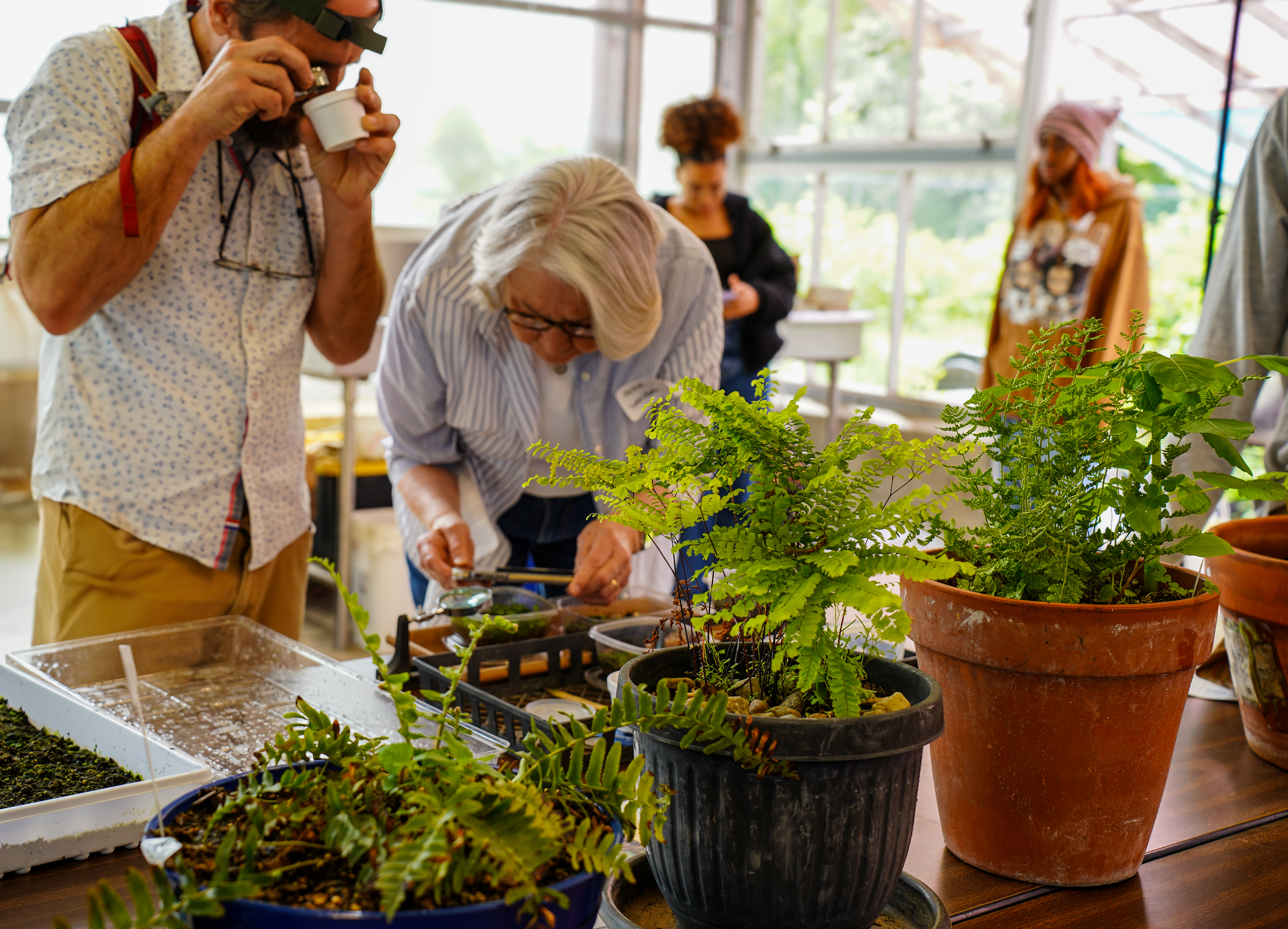Growers and Enthusiasts Learn to Identify Ferns at Extension Workshop
Office of Communications and Marketing
Young Hall
820 Chestnut Street
Jefferson City, MO 65101
 An ostrich fern growing in a garden bed at the Specialty Crops Program Finca EcoFarm at Lincoln University.
An ostrich fern growing in a garden bed at the Specialty Crops Program Finca EcoFarm at Lincoln University.
Ferns are ancient, abundant plants often grown for their decorative value or as edible crops. However, despite growing naturally across Missouri, ferns, especially native ones, aren’t cultivated in large quantities.
Lincoln University Cooperative Extension’s (LUCE) Specialty Crops Program seeks to change that.
Dr. Nadia Navarrete-Tindall, a Specialty Crops Program (SCP) specialist who focuses on native plants, hosted a fern identification and ecology workshop on May 2 to increase awareness and knowledge of native ferns.
Funded by a Missouri Department of Agriculture grant, the workshop served as an introductory course to native ferns. Attendees gathered in Lincoln University of Missouri’s (LU) Dickinson Research Center to hear from field ecologist and plant taxonomist Justin Thomas.
Thomas taught attendees about fern reproduction, anatomical terminology, identification techniques and ecology — where and how ferns grow and the conditions they thrive in.
Navarrete-Tindall said she hoped teaching growers and enthusiasts the basics would encourage people to learn how to propagate and sell ferns in the future. Due to high demand, she said ferns have high value as ornamental and food products.
Ferns also grow well in shade, making them a convenient crop for growers with trees on their land.
 Workshop attendees inspect ferns in various stages of growth at the Specialty Crops Program Finca EcoFarm on May 2.
Workshop attendees inspect ferns in various stages of growth at the Specialty Crops Program Finca EcoFarm on May 2.
Megan Fox, a farmer and artist with a deep affinity for ferns, was one of over 20 people who attended the workshop. Fox runs Blue Fox Farm, a homestead in Southern Boone County. There she grows elderberries, fruit trees and gardens and tends to a small poultry flock.
It’s also home to Stem & Star Nature Art Studio, a collaboration between Fox and Willa Campbell.
Fox said she’s always loved ferns and often features them in her art, which includes indigo dyeing, resist techniques and cyanotypes — also known as sun prints, where natural objects like leaves are used to create photographic images with sunlight.
She uses these methods to create unique towels, shirts, aprons, prints and more.
Fox attended the workshop so she could learn more about ferns and eventually cultivate her own — for art and food. She has a particular interest in ostrich ferns.
She explained Blue Fox Farm is rich with wet, forested lowlands — the perfect environment to grow ferns.
“It’s perfect for more fern species that we don’t have yet," Fox said. "So, I’m interested in learning the ecology and identification of other ferns, so I can get them established on our property."
 Field ecologist and plant taxonomist Justin Thomas inspects an ostrich fern at the Specialty Crops Program Finca EcoFarm on May 2.
Field ecologist and plant taxonomist Justin Thomas inspects an ostrich fern at the Specialty Crops Program Finca EcoFarm on May 2.
The workshop concluded with a tour of LU’s Finca EcoFarm, which the Specialty Crops Program uses for various projects. Navarrete-Tindall and other members of the SCP team showed attendees several species of ferns growing in raised garden beds and the finca’s greenhouse.
Thomas and attendees tested out the identification techniques they discussed earlier, closely inspecting stems and leaves of ostrich ferns for identifying characteristics.
Other attendees were eager to learn more about ferns and asked Navarrete-Tindall when they could expect a follow-up workshop.
For more information on future workshops involving ferns, please contact Navarrete-Tindall at [email protected].
Find out about other learning opportunities at Lincoln by visiting the LU calendar at https://www.lincolnu.edu/events/index.html.
